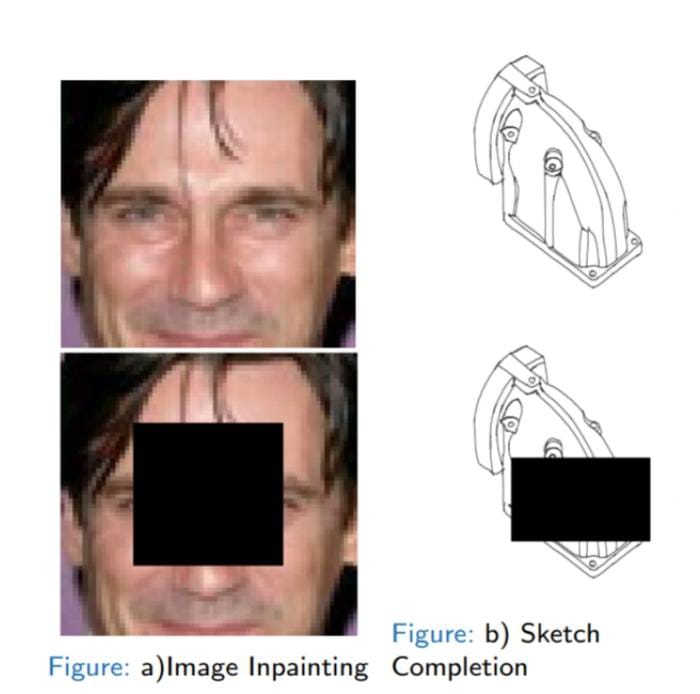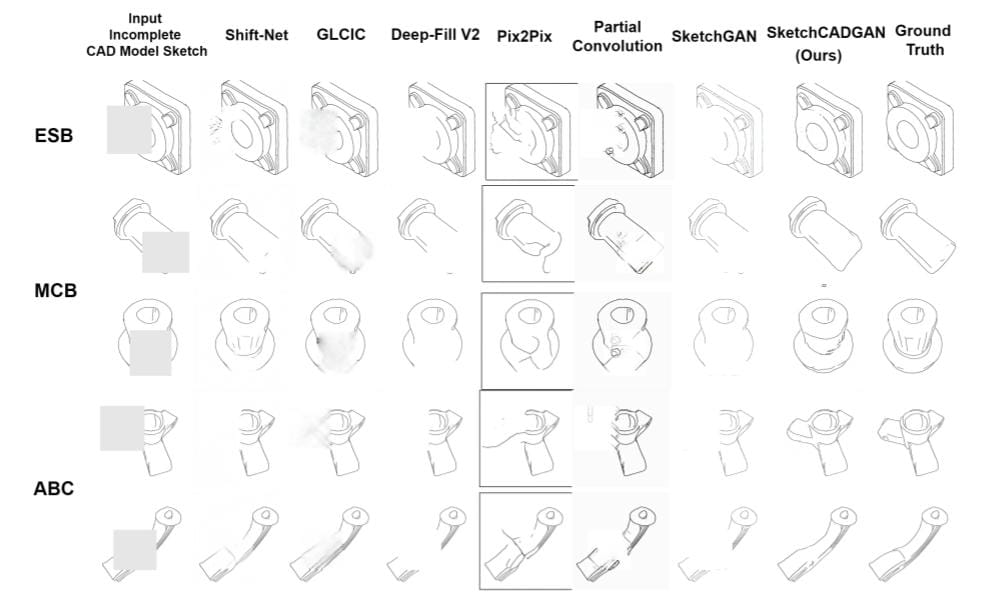Is it an incomplete sketch? Don’t worry SketchCADGAN is here

{This innovative project titled ‘’SketchCADGAN: A Generative Approach for Completing Partially Drawn Query Searches of Engineering Shapes to Enhance Retrieval System Performance’’ is done as part of our students’ internship sojourn at IIT Madras. They got the enviable opportunity to present the paper at 3DOR, a coveted international conference, and later got published in one of the well-acclaimed journals named Computers and Graphics Journal(Elsevier). }
The most endearing relation between a pencil and a set square has taken a backseat when CAD entered the scene. Whether it is 2D or 3D, CAD changed the way you create images or shapes. You can give the input data and retrieve a clear CAD image. But what if the input data for CAD images is incomplete? Read on to get the answer.
Without further ado, let’s cut to the chase. Suppose you need the CAD image of a nut or a bolt. But your text queries to retrieve those images lack the technicalities. That means you may miss giving the correct dimensions, and measurements in the CAD software. For a tech nerd, it might be a cakewalk to give a text input with all the accurate measurements. But all are not tech nerds. However, if it is a 2D sketch, then it is comparatively easy to retrieve the desired CAD shapes. But what if this input sketch is incomplete with missing curves, bends, or other precise dimensions? You will struggle a bit to get the desired image. Right?

Now, what if we say that an incomplete sketch is going to be a thing of the past soon? Yes, we have a solution for this mismatch between semantic alignment between textual queries and CAD models. Here comes our innovative solution SketchCADGAN.It fills in the blanks and limitations in your sketch and makes it a complete input sketch. We designed SketchCADGAN to address the current limitations in retrieval systems for engineering shapes.
How does SketchCADGAN create a complete sketch?

Now, let’s see how this incomplete data or the missing parts in the sketches is made complete. One of the key innovations of SketchCADGAN lies in its incorporation of two unique GAN networks consisting of two cascaded generators and 2 local discriminators.
These discriminators focus on specific patches around the missing portions of the input sketch. Thus they enhance the completion of incomplete areas and fill in the missing parts accurately. SketchCADGAN generates these more accurate and detailed sketches by utilizing localized information. As a result, you get an accurate input sketch and it improves the overall performance of the retrieval system.
Let’s get a bit technical again.SketchCADGAN is a novel generative adversarial network (GAN) that employs a two-stage-cascaded architecture, comprising generator networks trained adversarially. In the first stage, a generator network predicts a CAD model image from an incomplete sketch, while the second stage converts the CAD model image into a completed sketch. This two-stage approach leverages the strengths of GANs in generating realistic and detailed images while mitigating the challenges posed by incomplete input data.
The significance of SketchCADGAN in the field of engineering

- SketchCADGAN introduces the first network specifically designed to complete incomplete query sketches of engineering shapes. It enables a more efficient and accurate retrieval system and thereby fills the existing gap in the retrieval system.
- SketchCADGAN leads to improved retrieval performance. SketchCADGAN’s two-stage generator architecture enhances sketch completion by incorporating auxiliary CAD model image completion in the first stage. This approach leverages the complementary strengths of CAD model images and completed sketches. Thus it leads to improved retrieval performance.
- SketchCADGAN streamlines the retrieval process.
- SketchCADGAN improves the accuracy of the results.
Conclusion
SketchCADGAN is a promising solution that addresses the glaring challenges of filling the blanks of an incomplete query sketch. This significant advancement in the field of CAD model retrieval for engineering shapes is indeed a boon for various industries such as product design, engineering, and manufacturing. Once the next step in this ongoing research is taken, retrieving a 3D CAD model will be a cakewalk.
.png)